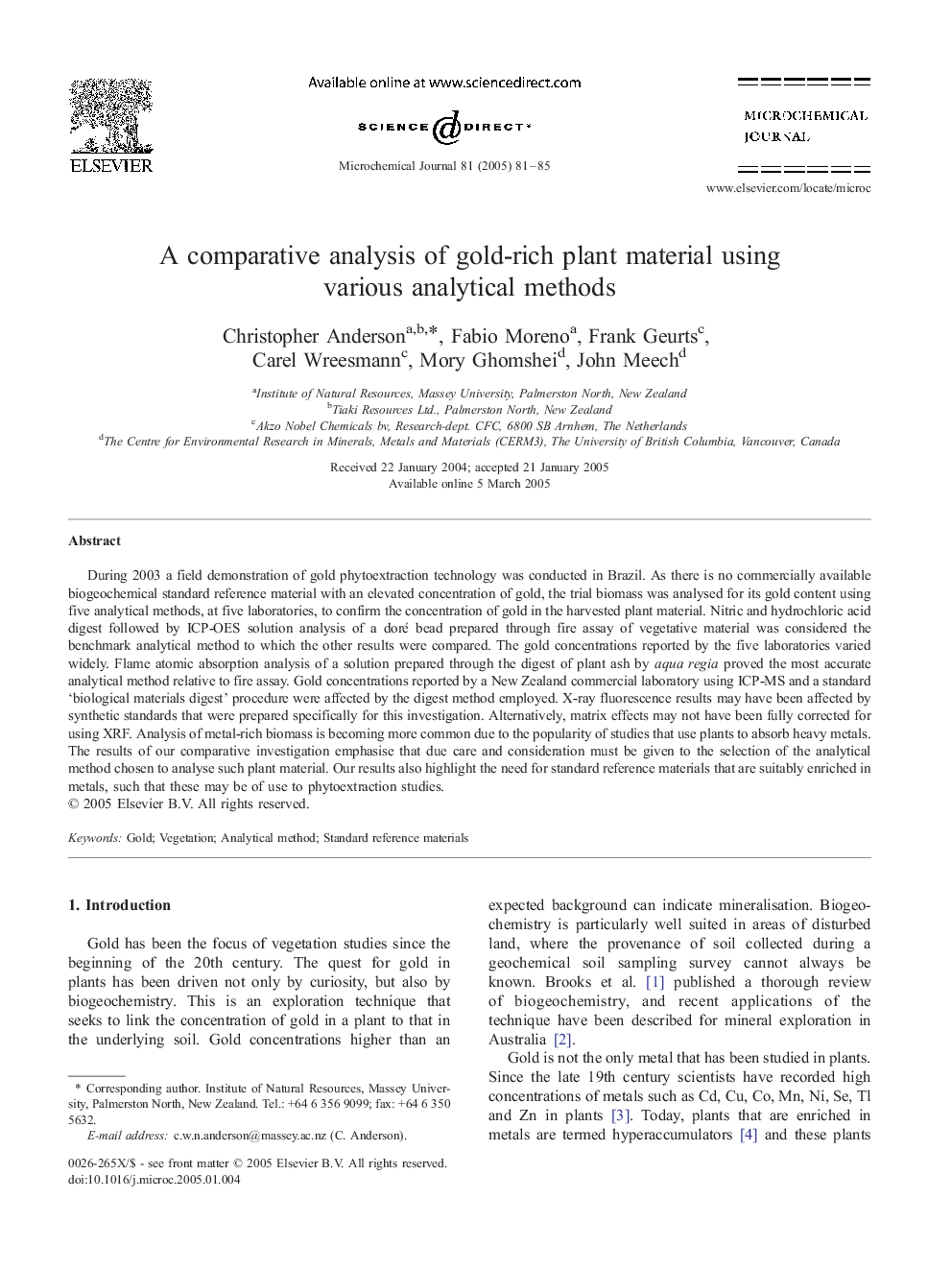| Article ID | Journal | Published Year | Pages | File Type |
|---|---|---|---|---|
| 10557222 | Microchemical Journal | 2005 | 5 Pages |
Abstract
During 2003 a field demonstration of gold phytoextraction technology was conducted in Brazil. As there is no commercially available biogeochemical standard reference material with an elevated concentration of gold, the trial biomass was analysed for its gold content using five analytical methods, at five laboratories, to confirm the concentration of gold in the harvested plant material. Nitric and hydrochloric acid digest followed by ICP-OES solution analysis of a doré bead prepared through fire assay of vegetative material was considered the benchmark analytical method to which the other results were compared. The gold concentrations reported by the five laboratories varied widely. Flame atomic absorption analysis of a solution prepared through the digest of plant ash by aqua regia proved the most accurate analytical method relative to fire assay. Gold concentrations reported by a New Zealand commercial laboratory using ICP-MS and a standard 'biological materials digest' procedure were affected by the digest method employed. X-ray fluorescence results may have been affected by synthetic standards that were prepared specifically for this investigation. Alternatively, matrix effects may not have been fully corrected for using XRF. Analysis of metal-rich biomass is becoming more common due to the popularity of studies that use plants to absorb heavy metals. The results of our comparative investigation emphasise that due care and consideration must be given to the selection of the analytical method chosen to analyse such plant material. Our results also highlight the need for standard reference materials that are suitably enriched in metals, such that these may be of use to phytoextraction studies.
Related Topics
Physical Sciences and Engineering
Chemistry
Analytical Chemistry
Authors
Christopher Anderson, Fabio Moreno, Frank Geurts, Carel Wreesmann, Mory Ghomshei, John Meech,
